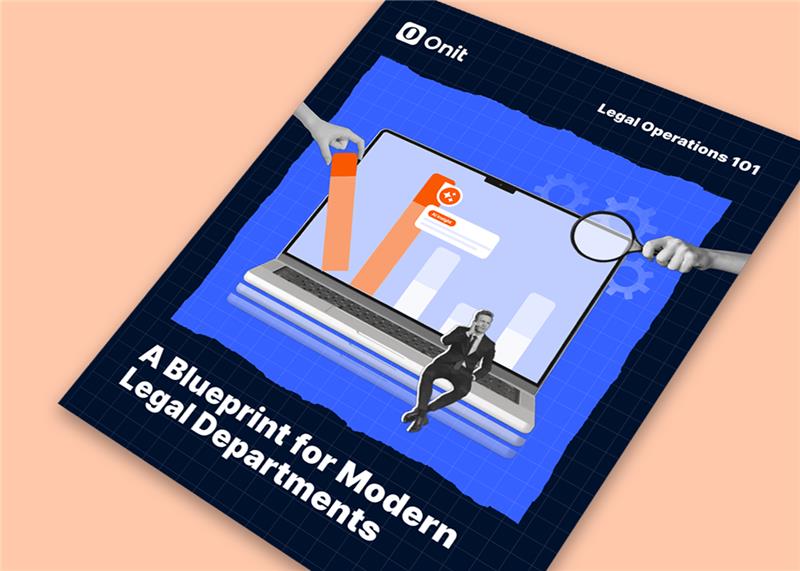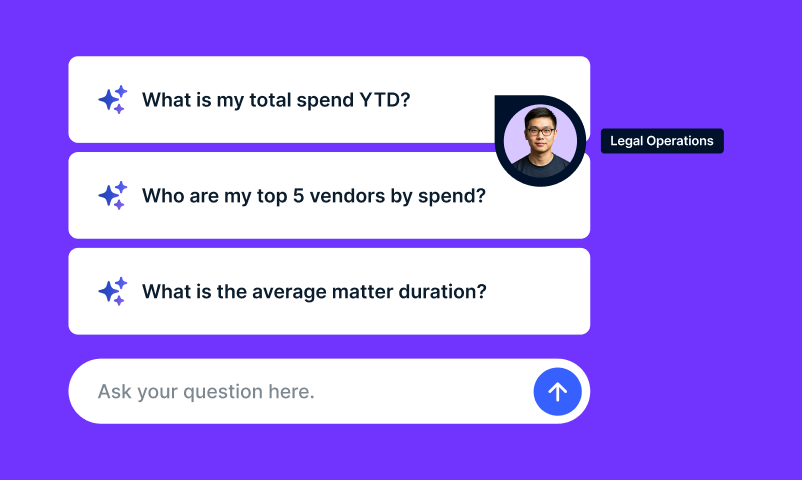
Modern legal operations doesn’t need more complexity. It needs a reset.
Legal teams everywhere are feeling the pressure: do more with less, move faster without compromising accuracy, and be strategic while staying compliant. Sounds like a tall order, doesn’t it? That’s where modern legal operations come in.
Today’s legal departments are trading bloated systems and manual processes for purpose-built platforms which offer data-backed insights and integrated workflows. With the right legal ops tools in place, legal teams of all sizes can move from reactive to proactive, from being viewed as bottlenecks to becoming true business drivers.
What Are Legal Ops Tools, and How Do They Support Modern Legal Operations?
At their core, legal ops tools are the systems, software, and strategies that enable in-house legal teams to become high-performing business units. Think of them as the infrastructure of modern legal operations. These are the tools that provide visibility, consistency, and control across legal workstreams.
Whether it’s managing outside counsel, wrangling contracts, automating invoice approvals, or pulling performance analytics for the GC’s board presentation, these tools are doing the quiet heavy lifting so legal professionals can focus on lawyering, not logistics.
And here’s the kicker: you don’t need to be a Fortune 100 to get started. Legal operations is no longer a luxury. It’s a necessity, and modern legal operations help make that shift possible.

Top 5 Legal Ops Tools That You Can’t Live Without
Not all tools are created equal. If you’re building out your legal ops tech stack as part of a modern legal operations strategy, start with these five.
1. e-Billing & Spend Management
Think of this as your financial GPS. Tools like Onit’s ELM e-billing help legal teams track every dollar spent, analyze outside counsel performance, and surface opportunities to switch from hourly billing to AFAs. It’s also a great way to build trust with finance by giving them exactly what they want: predictability.
2. Matter Management
No more mystery around who’s doing what, where, and by when. A matter management platform organizes caseloads, deadlines, documents, and stakeholders in one centralized space. Bonus points if it integrates with your other tools. Nobody needs another silo.
3. Contract Lifecycle Management (CLM)
From NDAs to MSAs to “we-needed-this-yesterday” custom deals, CLM tools accelerate contract review cycles, reduce risk, and bring visibility into every stage of the contract journey.
4. Legal Service Requests & Intake
Tired of email chaos and surprise fire drills? Legal intake tools are your “legal front door” and help standardize the way the business requests help, routes tasks, and automates common responses. Translation: fewer interruptions, more strategy.
5. Analytics & Dashboards
Legal teams are no longer the department of “no.” They’re strategic partners at the table. That means showing up with data. Modern legal operations depend on tools that deliver insights into spend, efficiency, and performance so you can speak the same language as your CFO.

“We Have No Idea Where Our Legal Budget Is Going”
That’s not just a stressful statement. It’s a red flag waving over your entire department. When legal spend is opaque and unpredictable, it creates ripple effects across the business. Finance loses confidence. Leadership starts asking hard questions. Legal’s seat at the strategy table starts to wobble. If you’ve ever found yourself scrambling to explain quarterly spikes or retroactively justifying outside counsel costs, it’s time to stop duct-taping your processes and start upgrading your foundation.
This is where legal ops tools come in. The right tech stack doesn’t just help you track spend. It gives you the foresight to manage it. By consolidating billing data, enforcing guidelines, and surfacing actionable insights, modern tools replace guesswork with clarity. And in today’s fast-paced business environment, clarity is your most valuable currency.
Chaos Isn’t a Strategy (But It’s Often the Default)
You shouldn’t need a crystal ball to figure out where a contract is in the approval cycle or whether that vendor invoice was reviewed. But if your team is constantly chasing status updates across inboxes or relying on tribal knowledge to move matters forward, you’re not alone. You’re just stuck managing legal operations the way it used to be done.
Legal ops tools solve this by creating structure around workflows. They help standardize intake, route requests based on urgency or risk, and give legal leadership the kind of performance metrics that other departments have had for years. No more managing legal like it’s 1999. No more spreadsheet heroics. Just a streamlined, connected way to run legal like a business unit… because that’s what it is.
So if legal still feels like the team that slows things down instead of driving things forward, it’s not a people problem. It’s a tooling problem. And that’s fixable.

Rethinking Legal Operations for a Modern Era
Too often, legal operations has been synonymous with clunky systems and slow adoption. But today’s approach is different. It’s modular, agile, and built for the way legal actually works. Legal ops leaders aren’t looking for another layer of process. They’re looking for clarity, control, and cross-functional momentum.
This evolution is particularly visible in how teams approach enterprise legal management. Not as a static system, but as a dynamic strategy. When powered by the right legal ops tools, modern legal operations become more than just a support function. They become a strategic engine that helps legal collaborate better with finance, support faster deal cycles with sales, and forecast resource needs before a crisis hits.
This isn’t just a digital transformation for the sake of “change.” It’s legal, evolved and positioned to lead.
Future-Proofing Legal: AI, Automation, and the Tools Ahead
Legal ops tools aren’t static. As AI, NLP, and machine learning evolve, they’re rapidly being baked into legal operations platforms, making it easier to:
- Auto-classify incoming legal requests
- Flag risky contract language
- Review invoices for compliance
- Predict matter outcomes based on historical data
In other words, your legal tech stack isn’t just about catching up. It’s about staying ahead.

AI is already transforming the way legal work gets done. From invoice review to matter triage to contract risk scoring, legal ops teams are finding ways to scale their impact without scaling their headcount. And the best part? These tools are becoming easier to implement and easier to justify, especially when they show measurable ROI.
For many teams, this next wave of modern legal operations is finally closing the gap between day-to-day legal work and enterprise legal management goals that once felt out of reach.
What’s Your Move?
The legal industry is transforming, and modern legal operations are the engine behind that evolution. Whether you’re a solo legal ops pro or part of a global team, investing in the right tools today will pay dividends tomorrow. Because at the end of the day, the best legal departments don’t just respond to change. They drive it.
If you’re ready to take the next step, we’ve got two resources to help you get started.
Step 1: Download our Legal Ops 101 One-Pager: A quick-hit guide to what legal ops is and why it matters. Perfect for busy GCs and legal ops leads needing a fast gut check.
Step 2: Dive deeper with our Legal Operations 101 Whitepaper. This is a comprehensive, strategic blueprint for building and scaling a high-impact legal ops function. From hiring to tooling to cross-functional collaboration, it’s everything you need to chart the right course.
Step 3: Already know what you need? Let’s talk. We’d love to hear what you’re solving for.



